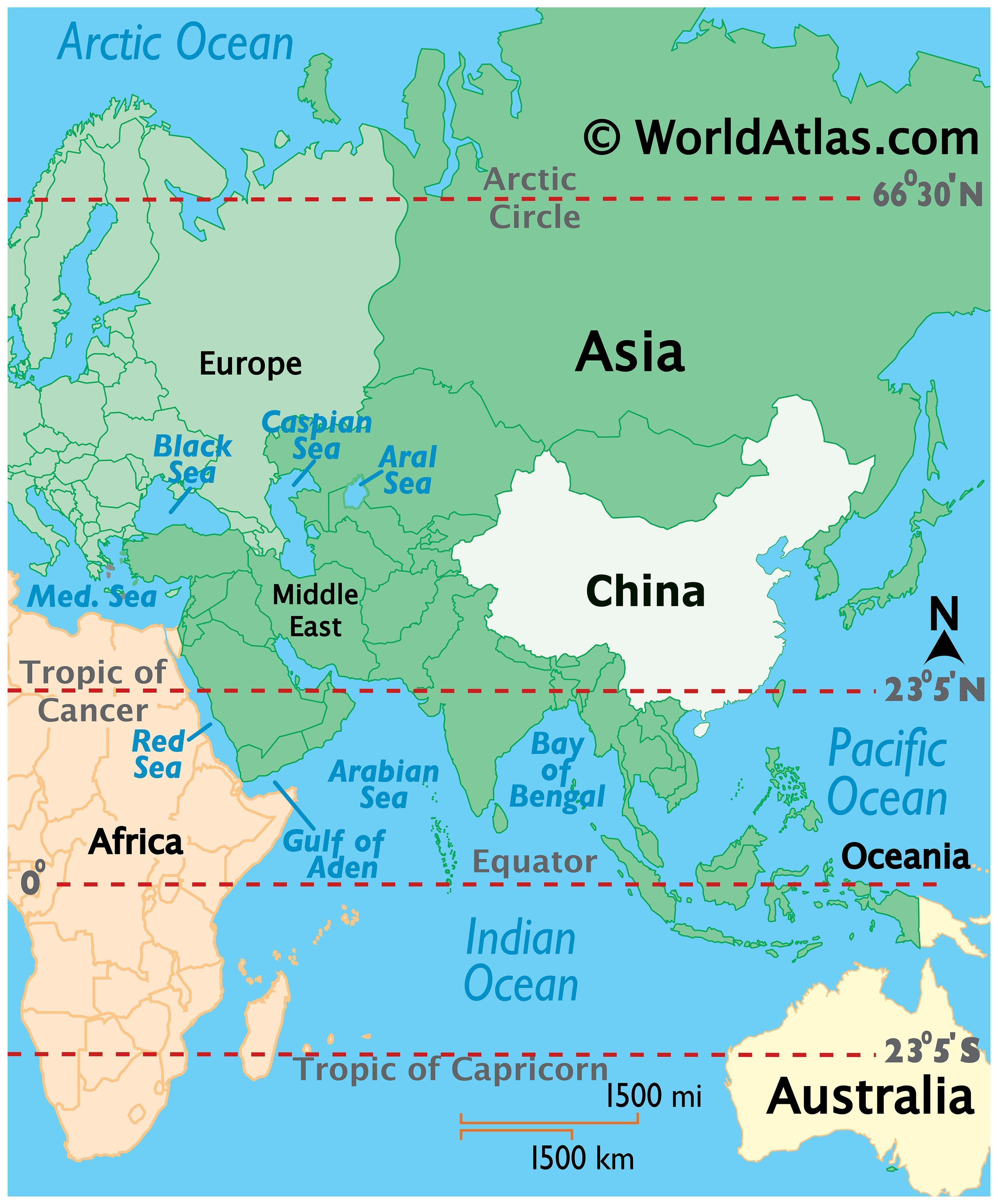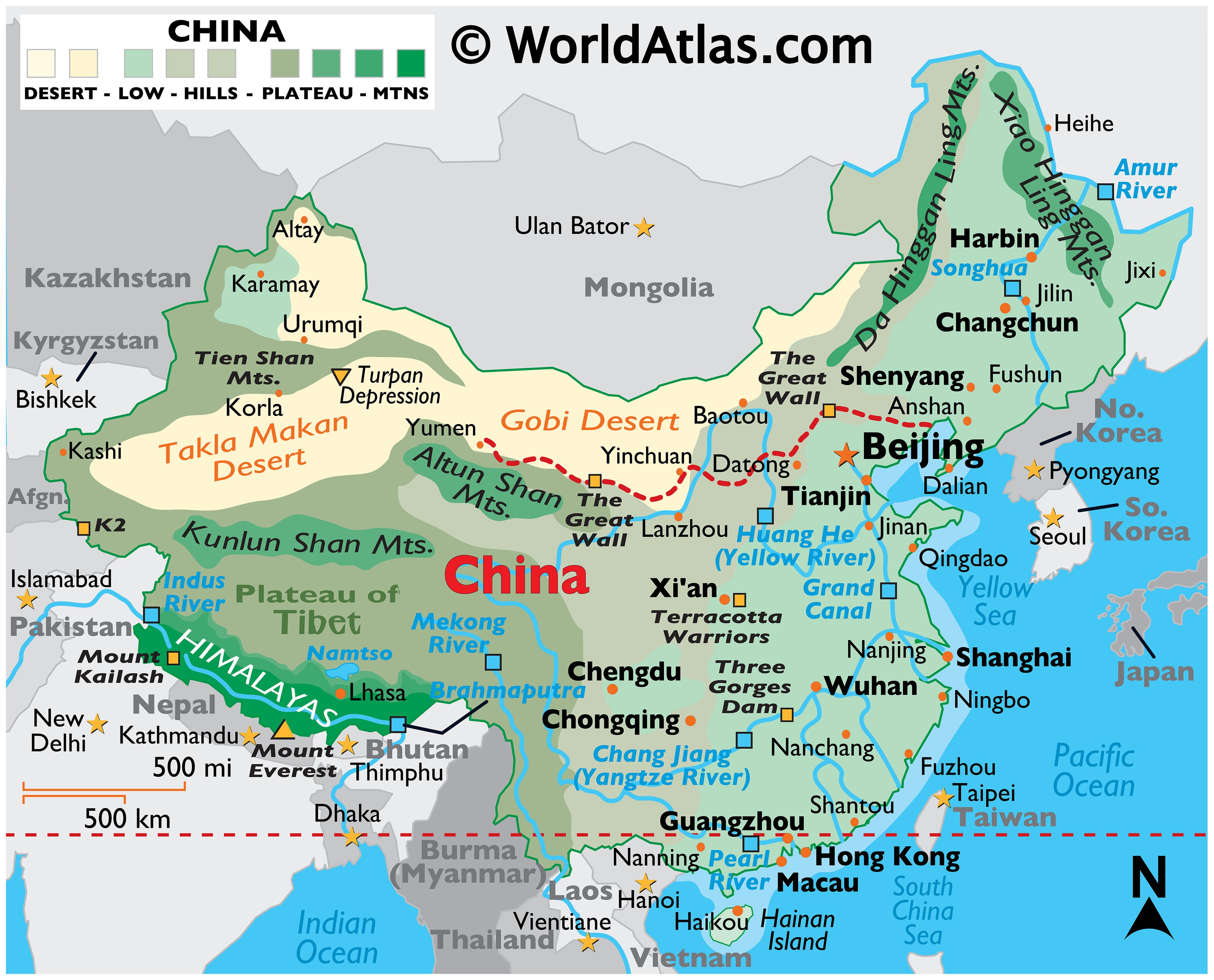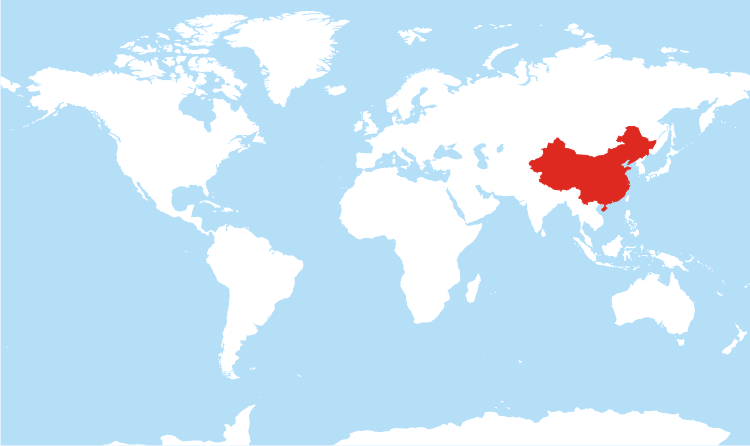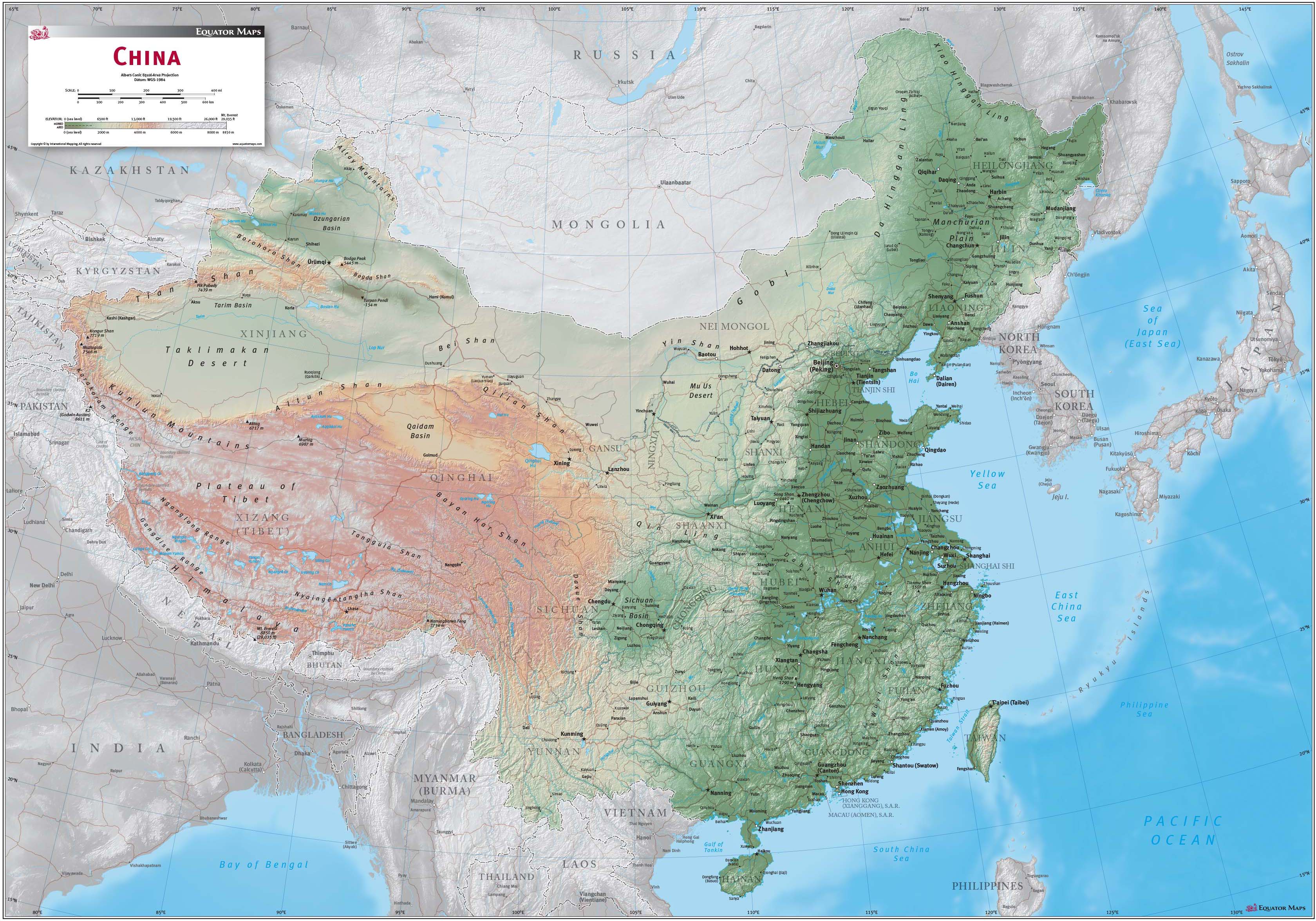The Significance of China’s Position Relative to the Equator: Exploring the Geographical and Economic Implications
Related Articles: The Significance of China’s Position Relative to the Equator: Exploring the Geographical and Economic Implications
Introduction
With great pleasure, we will explore the intriguing topic related to The Significance of China’s Position Relative to the Equator: Exploring the Geographical and Economic Implications. Let’s weave interesting information and offer fresh perspectives to the readers.
Table of Content
The Significance of China’s Position Relative to the Equator: Exploring the Geographical and Economic Implications

China, a vast and geographically diverse nation, occupies a unique position on the Earth’s surface. Its northernmost point extends beyond 53° N latitude, while its southernmost reaches just north of 4° N latitude. This expansive north-south spread places China in a region where the influence of the equator is distinctly felt, albeit not directly intersected. Understanding this geographical reality is crucial for appreciating the diverse environmental conditions, economic opportunities, and historical development of China.
The Equator’s Influence on China’s Climate and Environment:
The equator, an imaginary line circling the Earth at 0° latitude, acts as a dividing line between the Northern and Southern Hemispheres. It is characterized by consistent solar radiation, leading to consistently warm temperatures and abundant rainfall. While China does not cross the equator, its southernmost regions experience a significant impact from this equatorial influence.
-
Tropical and Subtropical Climates: The southernmost provinces of Hainan, Guangdong, and Guangxi, situated near the Tropic of Cancer, experience a tropical monsoon climate. This means hot, humid summers and mild, dry winters. The region receives abundant rainfall, supporting a diverse ecosystem of rainforests, mangroves, and wetlands.
-
Varied Ecological Zones: As one moves northwards, the influence of the equator gradually diminishes. The transition from tropical to subtropical, temperate, and eventually cold climates creates a mosaic of ecological zones. This diversity is reflected in China’s vast array of flora and fauna, ranging from tropical rainforests to alpine meadows and deserts.
-
Climate Variability: The influence of the equator also contributes to the significant climate variability across China. The country experiences distinct seasons, with hot, humid summers in the south and cold, dry winters in the north. This variability has historically shaped agricultural practices and settlement patterns.
Economic Implications of China’s Position:
China’s geographical position relative to the equator has profound implications for its economic development and global trade.
-
Agricultural Production: The tropical and subtropical climates of southern China are ideal for cultivating a wide range of agricultural products, including rice, tea, sugarcane, and tropical fruits. This region plays a vital role in ensuring China’s food security and contributes significantly to its agricultural exports.
-
Natural Resources: China’s diverse ecological zones provide a wealth of natural resources, including forests, minerals, and hydropower potential. The southern regions, with their abundant rainfall and fertile soils, are particularly rich in agricultural resources.
-
Strategic Trade Routes: China’s southern coast, close to the equator, has historically served as a crucial gateway for trade with Southeast Asia and other regions. This strategic location has facilitated the development of major port cities like Guangzhou and Shenzhen, contributing significantly to China’s economic growth.
-
Tourism: China’s diverse landscapes and climates, influenced by its position relative to the equator, attract tourists from around the world. From the tropical beaches of Hainan to the snow-capped mountains of Tibet, China offers a wide range of tourism experiences.
Historical and Cultural Significance:
China’s unique geographical position has also played a significant role in its historical development and cultural identity.
-
Early Civilizations: The fertile plains of southern China, influenced by the equator’s climate, supported the development of early civilizations along the Yangtze and Pearl Rivers. These regions have been centers of cultural innovation and economic activity for centuries.
-
Cultural Diversity: The diverse ecological zones and climate variations across China have fostered a rich tapestry of cultures and traditions. From the vibrant Cantonese culture in the south to the nomadic traditions of the northern steppes, China’s cultural diversity is a testament to the influence of its geographical location.
-
Historical Interactions: China’s position relative to the equator has facilitated interactions with neighboring countries in Southeast Asia and beyond. This has led to exchanges of ideas, goods, and cultural practices, shaping China’s historical trajectory.
FAQs
Q: Does China have a tropical climate?
A: While China does not cross the equator, its southernmost regions, particularly Hainan, Guangdong, and Guangxi, experience a tropical monsoon climate characterized by hot, humid summers and mild, dry winters.
Q: How does China’s position relative to the equator affect its agricultural production?
A: The tropical and subtropical climates of southern China are ideal for cultivating a wide range of agricultural products, including rice, tea, sugarcane, and tropical fruits. This region plays a vital role in ensuring China’s food security and contributes significantly to its agricultural exports.
Q: What are the economic implications of China’s geographical position?
A: China’s location near the equator has facilitated the development of major port cities, strategic trade routes, and access to a wealth of natural resources. This has contributed significantly to its economic growth and global trade.
Q: How does China’s position relative to the equator influence its cultural diversity?
A: The diverse ecological zones and climate variations across China, influenced by its position relative to the equator, have fostered a rich tapestry of cultures and traditions. This includes variations in language, cuisine, and customs.
Tips
- When studying China’s geography, it is crucial to consider the influence of the equator on its climate, environment, and economy.
- The southernmost regions of China, influenced by the equator’s climate, are vital for agricultural production and economic development.
- China’s diverse ecological zones, influenced by its position relative to the equator, contribute to its rich cultural diversity and natural resources.
- Understanding the historical and cultural significance of China’s geographical position provides valuable insights into its development and global interactions.
Conclusion
China’s position relative to the equator, while not directly intersecting it, exerts a significant influence on the country’s climate, environment, economy, and cultural landscape. The tropical and subtropical climates of southern China contribute to its agricultural production, natural resources, and economic growth. The diverse ecological zones across the country, shaped by the equator’s influence, foster a rich tapestry of cultures and traditions. Understanding this geographical reality is essential for appreciating the complexity and dynamism of China, a nation that embraces both the challenges and opportunities presented by its unique position on the Earth.








Closure
Thus, we hope this article has provided valuable insights into The Significance of China’s Position Relative to the Equator: Exploring the Geographical and Economic Implications. We hope you find this article informative and beneficial. See you in our next article!